-
PDF
- Split View
-
Views
-
Cite
Cite
Content Snapshots, Annals of Botany, Volume 127, Issue 4, 1 April 2021, Pages i–iii, https://doi.org/10.1093/aob/mcab018
Close - Share Icon Share
Intraspecific trait variation in plants: a renewed focus on its role in ecological processes
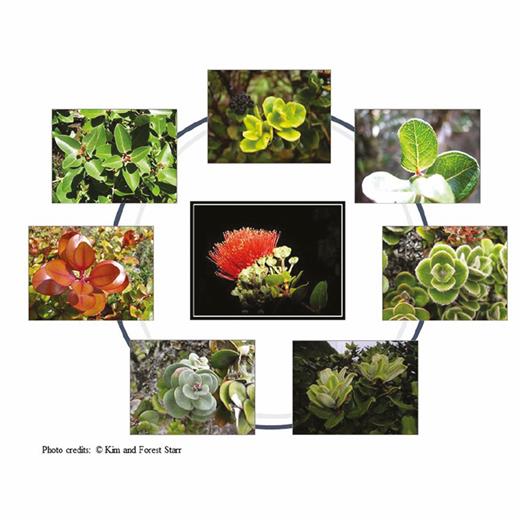
Annals of Botany 127: 397–410, 2021
doi: 10.1093/aob/mcaa011
Intraspecific trait variation (ITV) has always been the foundation of evolutionary ecology, but it is often ignored in trait-based ecology. Westerband et al. review evidence that ITV is extensive and relevant to higher order processes such as population dynamics, ecosystem function, and community assembly. They also show that more research is needed on the temporal (i.e. ontogenetic) and epigenetic mechanisms of ITV, on understudied traits such as root and reproductive traits, and that more systematic sampling procedures can help to clarify the structure of ITV within and across studies.
Author: Andrea Westerband, Jennifer Funk, and Kasey Barton
The earliest depiction of intraspecific trait variation in plants?
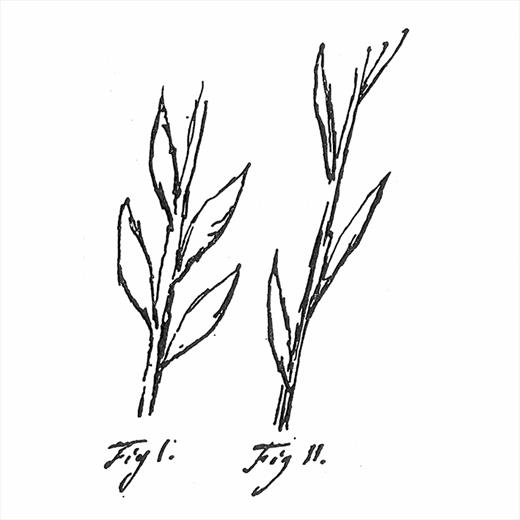
Annals of Botany 127: 411–412, 2021
doi: 10.1093/aob/mcaa091
It has long been recognized that plant features may vary between individuals of the same species. When traversing the Alps in 1786, the German poet and naturalist Goethe noticed a change in the appearance of willows (Spix sp.). He recorded in a diary that their leaves become “thinner and more lanceolate” with increasing altitude. He added a crude drawing for illustration. The drawing may be the first depiction of intraspecific variation in a wild plant population.
Author: Ulrich Stegmann
Effects of intrinsic environmental predictability on intra-individual and intra-population variability
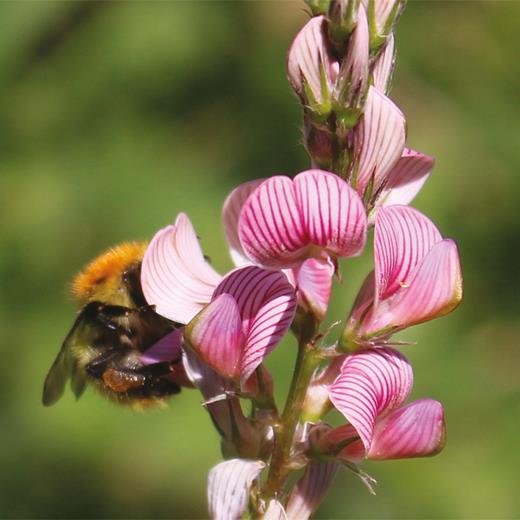
Annals of Botany 127: 413–424, 2021
doi: 10.1093/aob/mcaa096
Lower climatic predictability affects mean plant trait expression, but its effects on trait variance are poorly understood. In this study, March-Salas et al. show that intra-individual variability is a plastic trait under stabilizing selection, and that it plays a key role in plants coping with less predictable climates. Their multi-generational experiment reveals that adaptive changes in intra-individual variability may evolve more slowly than in trait means.
Authors: Martí March-Salas, Guillermo Fandos, and Patrick Fitze
Diversity of parental environments and phenotypic variation
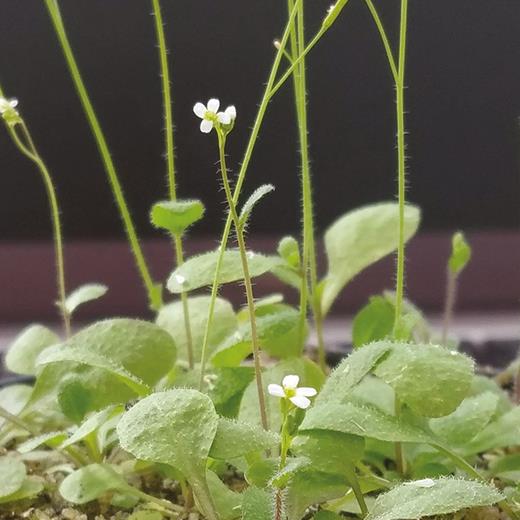
Annals of Botany 127: 425–436, 2021
doi: 10.1093/aob/mcaa100
The positive diversity effect on ecosystem functioning has been scarcely assessed in terms of intraspecific trait variability within populations. Here, Puy et al. disentangle the role of genetic diversity and the diversity of parental environments on Arabidopsis thaliana (Brassicaceae) population productivity, resistance against environmental fluctuations and the creation of intraspecific phenotypic variation. In general, they find that neither the increase of genetic diversity nor the diversity of parental environments has a remarkable effect on productivity or resistance. However, when epigenetic variation is reduced via demethylation, mixtures are less productive than monocultures (negative diversity effect); this is caused by an increase of competition due to a reduction of phenotypic differences resulting from different parental origins.
Authors: Javier Puy, Carlos P. Carmona, Hana Dvořáková, Vít Latzel, and Francesco de Bello
Intraspecific variation in photosynthetic traits
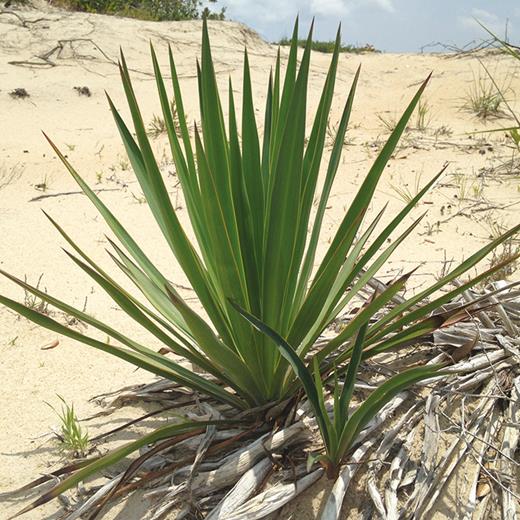
Annals of Botany 127: 437–450, 2021
doi: 10.1093/aob/mcaa036
Crassulacean acid metabolism (CAM) is a modified form of photosynthesis that is found in about 8% of all flowering plants; how it evolves from C3 photosynthetic ancestors remains unknown. To understand the evolutionary trajectory of CAM, Heyduk et al. assess intraspecific variation in CAM-related photosynthetic and anatomical traits in an intermediate CAM species, Yucca gloriosa (Asparagaceae). They find that genotypes of Y. gloriosa use variable levels of CAM photosynthesis and have different photosynthetic responses to drought stress. Additionally, no relationship exists between anatomical and photosynthetic traits within Y. gloriosa. These results suggest that there are varied trajectories leading towards the evolution of low-level CAM.
Authors: Karolina Heyduk, Jeremy N. Ray, and Jim Leebens-Mack
Microanatomical traits and the tracking of climate gradients

Annals of Botany 127: 451–460, 2021
doi: 10.1093/aob/mcaa146
Plant functional traits, like specific leaf area (SLA), are utilized to infer mechanistic growth responses to resource availability; however, these traits are amalgamations of many underlying and understudied traits found at the microanatomical level. Bachle and Nippert analyse whole-level traits and microanatomical structures of the dominant species Andropogon gerardii (Poaceae) from four locations in the North American Great Plains. They identify variability in microanatomical traits that probably impact upon carbon and water use strategies that are not perceivable in SLA.
Authors: Seton Bachle and Jesse B. Nippert
Intraspecific trait variation along an aridity gradient
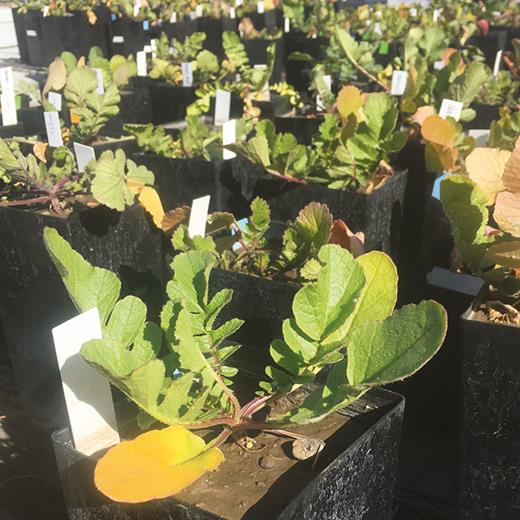
Annals of Botany 127: 461–472, 2021
doi: 10.1093/aob/mcaa173
Plant adaptation to arid and semi-arid environments can occur by building structures that allow plants to survive with limited water (drought resistance) or by completing growth and reproduction during times of water availability (drought escape). Here, Welles and Funk use a common garden study of California wild radish to investigate how traits associated with drought adaptation (carbon assimilation, water use, biomass allocation and flowering phenology) vary across an aridity gradient. They demonstrate that populations from arid environments have rapid flowering and increased allocation to root biomass, traits associated with both drought escape and tolerance. While previous studies have suggested that drought escape and drought resistance are mutually exclusive drought response strategies, this finding suggests that invasive annuals may employ both strategies to succeed in novel semi-arid environments.
Authors: Shana R. Welles and Jennifer L. Funk
Shifts in fine root traits within and among species
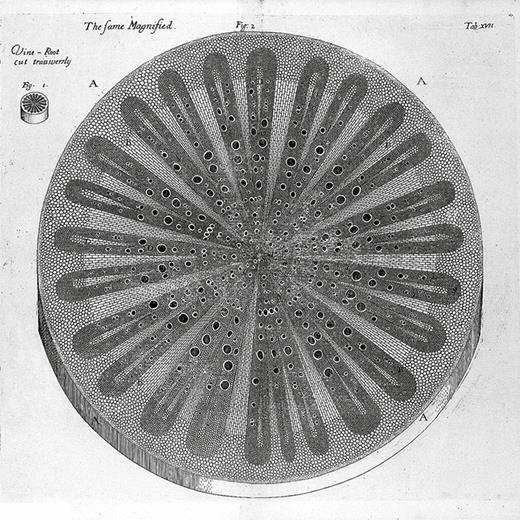
Annals of Botany 127: 473–482, 2021
doi: 10.1093/aob/mcaa175
Much more is known about trait variation in leaves and stems than roots. Here, Taseski et al. explore how heathland roots and leaves change from wet to dry sites south of Sydney, Australia. Root traits showed a variety of patterns with respect to within- and among-species variation across the hydrological gradient. Root tissue density is a most promising trait for explaining species responses, as it shows shifts both within and across species towards less dense roots in the wettest sites.
Authors: Guy M. Taseski, David A. Keith, Rhiannon L. Dalrymple, and William K. Cornwell
Image credit: N. Grew, Cross-section of vine roots, The anatomy of plants (Wellcome Collection. Attribution 4.0 International (CC BY 4.0))
Leaf economic traits vary with size in coffee
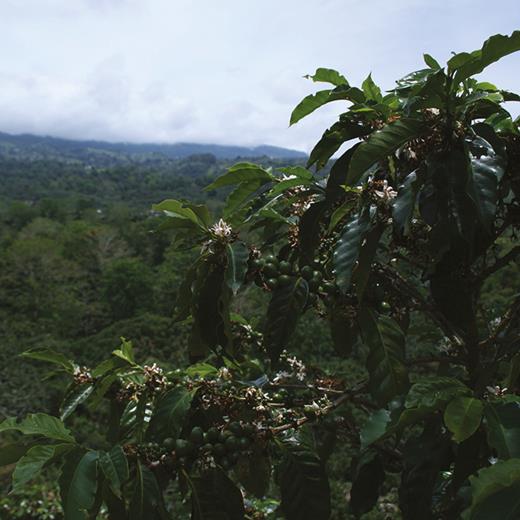
Annals of Botany 127: 483–494, 2021
doi: 10.1093/aob/mcaa199
In this study, Martin and Isaac explore how the leaf economics traits of a single coffee variety (Coffea arabica var. Caturra) grown in agroforestry systems change as coffee plants grow larger. Their study shows that within a single genotype, leaf traits covary and trade-off along a within-genotype Leaf Economics Spectrum, and that reproduction plays a role in governing intra-genotype trait variation and trait relationships.
Authors: Adam R. Martin and Marney E. Isaac
Leaf traits vary with ontogeny and water availability in a Mediterranean-climate shrub species
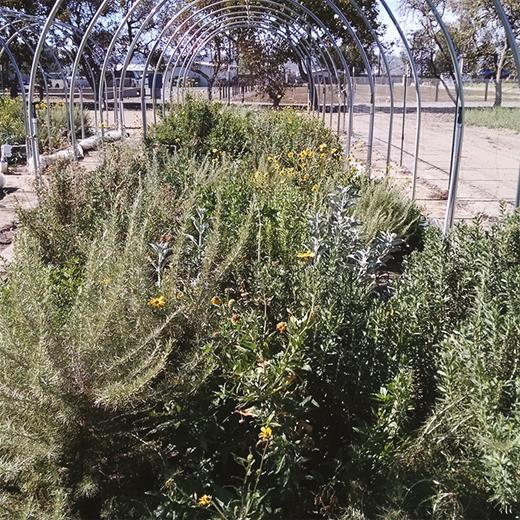
Annals of Botany 127: 495–504, 2021
doi: 10.1093/aob/mcaa106
Intraspecific trait variation strongly impacts ecological and evolutionary processes, but it is not well characterized along important environmental and ontogenetic axes for many plant species or traits. Funk et al. find that plant age is a stronger driver of variation in traits and performance than water availability, and that older plants demonstrate trait values consistent with a more conservative resource-use strategy.
Authors: Jennifer L. Funk, Julie E. Larson, and Gregory Vose
Defense and reproduction in a foundation species
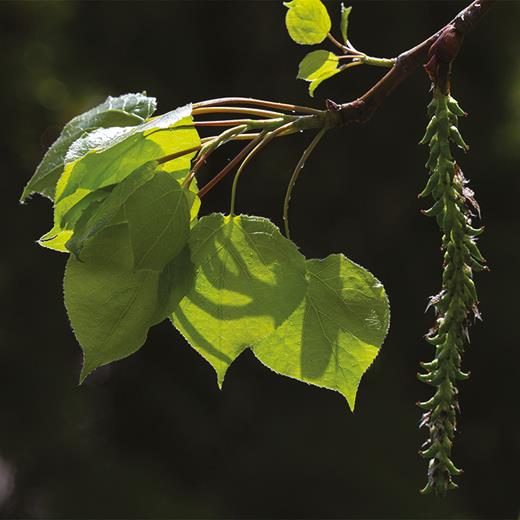
Annals of Botany 127: 505–518, 2021
doi: 10.1093/aob/mcaa070
Intraspecific trait variation (ITV) is central to the extraordinary ecological and evolutionary success of trembling aspen,Populus tremuloides (Salicaceae), a foundation forest species with the widest distribution of all North American trees. Cole et al. explore genotypic and developmental ITV, and the tradeoffs among growth, defence and reproduction in a large common garden of aspens. They find that leaf defences decline sharply with age, that defence and reproduction do not exhibit a tradeoff and that growth is reduced when allocation to defence and reproduction increase.
Authors: Christopher T. Cole, Clay J. Morrow, Hilary L. Barker, Kennedy F. Rubert-Nason, Jennifer F. L. Riehl, Tobias G. Köllner, Nathalie D. Lackus, and Richard L. Lindroth
Photo: Richard Lindroth
Trait combinations important for predicting plant performance in a ‘biodiversity hotspot’

Annals of Botany 127: 519–532, 2021
doi: 10.1093/aob/mcaa060
The Cape Floristic Region in South Africa is a ‘biodiversity hotspot’, hosting thousands of endemic plant species. To better understand plant diversity in this region, Nolting et al. investigate associations between structural (e.g. leaf area) and physiological (e.g. photosynthetic rate) traits, as well as associations between these traits and plant fitness, on five Protea (Proteaceae) species. They find that despite substantial intraspecific trait variation in physiological traits, trait associations reflect an overall plant strategy consistent with investment in fast growth and reproduction. Further, while only a few individual structural traits predicted plant physiology, trait combinations are strong predictors of plant performance.
Authors: Kristen M. Nolting, Rachel Prunier, Guy F. Midgley, and Kent E. Holsinger
On the modelling of tropical tree growth
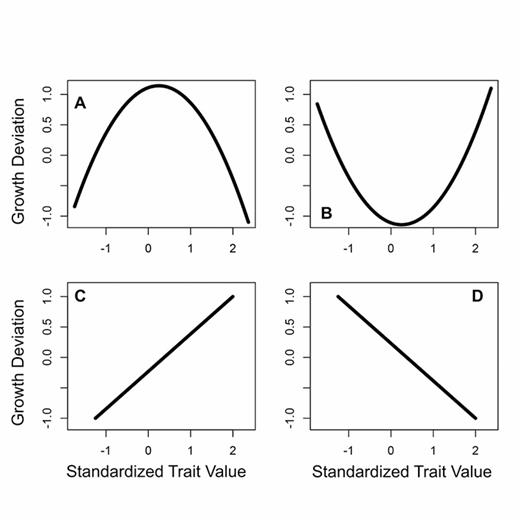
Annals of Botany 127: 533–542, 2021
doi: 10.1093/aob/mcaa085
Functional traits are increasingly being used to model plant growth and survival. Perhaps surprisingly, performance in one region is often modelled using species average trait values from other regions or from global databases. Yang et al. combine individual-level trait and fine-scale growth data from >500 co-occurring individual trees from 20 species in a Chinese tropical rainforest. They show that trait–growth relationships measured at the individual level vary across species are often weak, and do not align with the results of analyses conducted at the species level. However, when individual-level models of growth using leaf area ratio approximations and integrated traits are constructed, strong predictive models of tree growth can be generated.
Authors: Jie Yang, Xiaoyang Song, Min Cao, Xiaobao Deng, Wenfu Zhang, Xiaofei Yang, and Nathan G. Swenson
Intraspecific trait variation shapes community response to fire
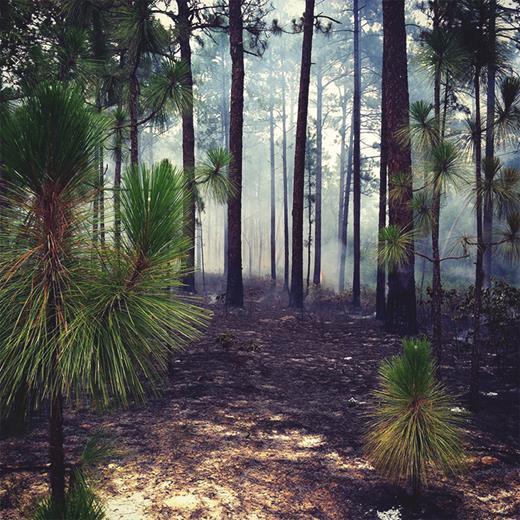
Annals of Botany 127: 543–552, 2021
doi: 10.1093/aob/mcaa179
Increased fire frequency can have profound impacts on the composition and structure of a community, even in fire-adapted ecosystems. Mitchell et al. examine the response of understory vegetation in a fire-adapted ecosystem to understand how the community responds to more frequent fires. Structure, composition, and functional trait expression respond directionally to increased fire. Ecotones shift and composition is altered as fire frequency increases. Importantly, specific leaf area decreases at the community level in response to fire, and it is revealed that this change is primarily due to changes in intraspecific trait expression, and not changes in presence or abundance.
Authors: Rachel M. Mitchell, Greg M. Ames, and Justin P. Wright
Intraspecific trait variation in native Hawaiian plants and non-native invaders
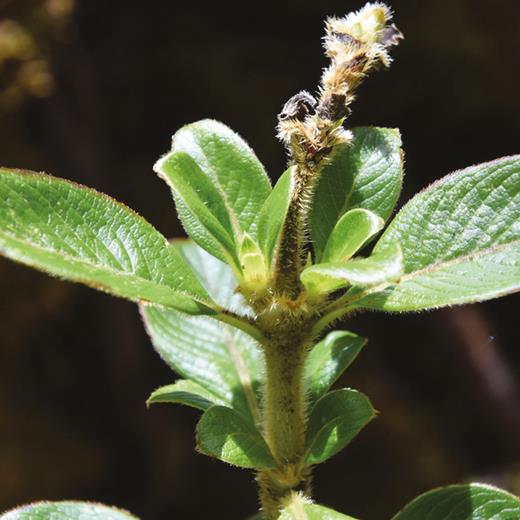
Annals of Botany 127: 553–564, 2021
doi: 10.1093/aob/mcaa050
Native plant communities are facing persistent threat of extinction resulting from invasion by non-native species, yet it remains unclear whether invasives differ in their resource allocation strategies. Westerband et al. use a multi-scale approach to quantify trait variation in 91 species across four Hawaiian Islands and show that climate explains more trait variation than species identity within natives, and that intraspecific variation is driven by distinct climate variables in natives and invasives.
Authors: Andrea C. Westerband, Tiffany M. Knight, and Kasey E. Barton
Non-native herbs display less trait variability than native species along an elevational gradient
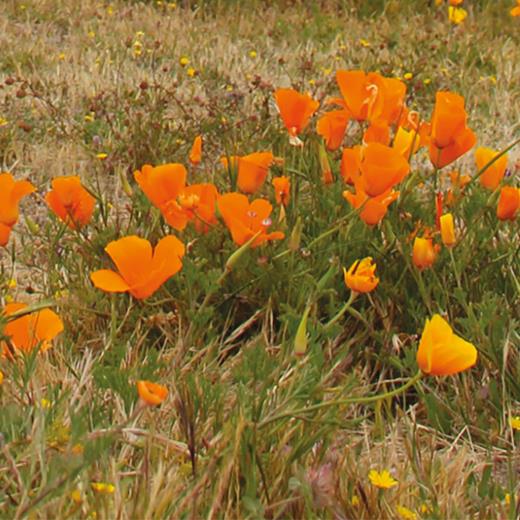
Annals of Botany 127: 565–576, 2021
doi: 10.1093/aob/mcaa067
Non-native plant species increasingly invade high elevations and intraspecific trait variability has been proposed to facilitate invasions into these environments. Kühn et al. carried out a study of functional leaf traits of 11 native and non-native herb species on Tenerife, Canary Islands. They found that leaf traits of non-native species exhibit almost no change along the elevational gradient compared to native species, while the within-population variability of some traits decreased. These results indicate that non-native species possess certain traits which are useful along the entire elevational gradient while occupying an increasingly restricted trait space at higher elevations. Native species have more time to evolve in response to local environmental heterogeneity, possibly leading to greater trait variability.
Authors: Paul Kühn, Amanda Ratier Backes, Christine Römermann, Helge Bruelheide, and Sylvia Haider



